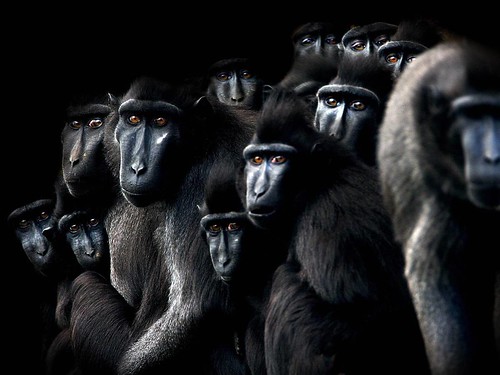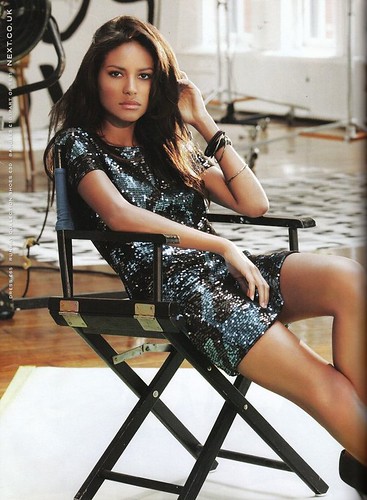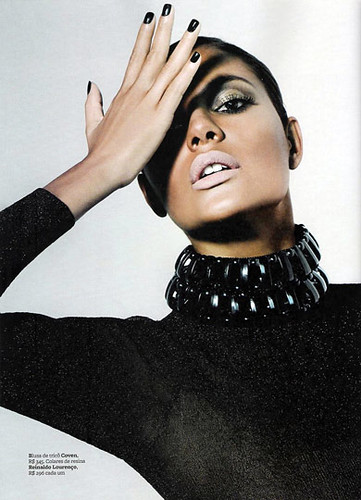2010/04/29
Curse of the Black Gold: Oil in the Niger Delta
"Trans Amadi Slaughter is the largest abattior in the delta. They kill thousands of animals a day, roast them, cut them up and prepare the meat for sale throughout Rivers State and the rest of the delta. Nearly all of the workers here, especially the meat handlers, are Hausa and Yoruba, mostly muslim too. In the delta fish was traditionally the main source of protein, but as fish stocks have dwindled due to pollution from oil and over fishing, meat is becoming more common in the delta."
Lima, coming back with good fights!
"Fashion icon and supermodel Adriana Lima is BACK in front of the camera and partnering with acclaimed fashion photographer Russell James for her first ever Live Stream event. Lima and James will stream from the set of her photo shoot for James’ ongoing “Nomad Two Worlds” project, which is dedicated to preserving indigenous rights and creating awareness for child health research. Lima had been on hiatus from the modeling world for the birth of her first child."
2010/04/11
2010/04/10
Brazilian beauty
I'm taken by the beauty of this gorgeous woman.
She is one of the new "ethnic" looking women taking the lead in major campaigns: a sample here. Victoria Secret has featured her in many of her ads. Her type is having a big impact in markets, so I'm glad to find her face in so many places.
She is one of the new "ethnic" looking women taking the lead in major campaigns: a sample here. Victoria Secret has featured her in many of her ads. Her type is having a big impact in markets, so I'm glad to find her face in so many places.
2010/04/03
STUDY: extremes affect women's self steem
 Common Sense would tell you healthy is pretty.
Common Sense would tell you healthy is pretty. But idealized commercial projections can challenge this common sense, specially in the field of fashion and cosmetics advertisement. How can you inspire consumers without manipulating healthy common sense is an ethical approach to this dilemma.
"Mandel and her colleagues performed a series of experiments based on the popular idea that looking at extremely thin models can negatively affect consumers’ self-esteem and possibly even lead to eating disorders in young girls. That belief is why fashion show organizers in Milan, Italy and Madrid, Spain, recently banned super waif models from their catwalks.
In the new study, researchers took the link between model size and self-esteem even further by factoring in the consumers’ own body size and self-esteem before looking at the ads. Although they did confirm that exposure to extremely thin models can be damaging to most women’s self-esteem, they also found some surprising effects.
“We show it is not just the size of the models in the ads, but also the relative distance between the consumer’s size and the model’s size that affects self-esteem,” Mandel said.
In the experiments, hundreds of female students were categorized as having low, normal or high body mass index (BMI) based on their heights and weights. They were then invited to a lab, but were not told the true nature of the study. They were shown a variety of ads and told to answer several questions, only some of which were truly related to the study. The questionnaires showed the participants’ self-esteem shifted based on the model sizes they saw in the ads and whether they considered themselves to be similar to or different from those sizes.
Low-BMI, thinner women tended to experience a boost in self-esteem when they viewed all models because they identified positively with the thinner models and saw themselves as different from the heavier models. Higher-BMI, heavier women dropped in self-esteem when looking at all models because they saw themselves as different from the thinner, idealized ones and similar to the overweight models.
Normal-BMI women had the most shifts in self-esteem, depending on what types of images they saw and could therefore be the most influenced by pictures in ads. For example, if they viewed a moderately thin model, they felt similar and good; if they saw a moderately heavy model, they worried they were similar and overweight.
These findings could be used to prompt changes in behavior. For example, if a normal-size woman sees moderately heavy images in ads for weight-loss products, she might feel overweight and be more inclined to buy a diet plan or gym membership. The same premise could apply to using heavy images in public service announcements aimed at fighting the obesity epidemic."
SOURCE
Subscribe to:
Posts (Atom)
Blog

- MARIA H
- Compilation of aesthetic manifestations beyond compliance, bring us emancipation.
Archive
-
▼
10
(186)
-
▼
Apr 2010
(14)
- Oliver People's propaganda
- No title
- Curse of the Black Gold: Oil in the Niger Delta
- , originally uploaded by parallel entity.
- Maxime Quoilin
- Lima, coming back with good fights!
- Caetano Veloso (1969)- Alfaomega
- Brazilian beauty
- , originally uploaded by parallel entity.
- , originally uploaded by parallel entity.
- , originally uploaded by parallel entity.
- , originally uploaded by parallel entity.
- STUDY: extremes affect women's self steem
-
▼
Apr 2010
(14)











